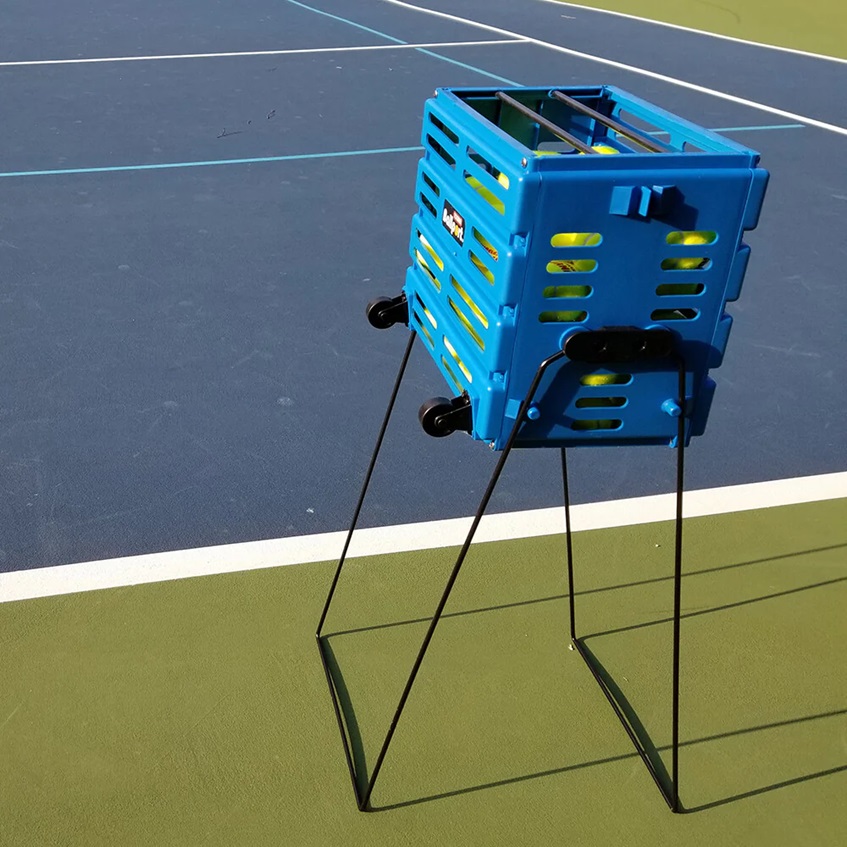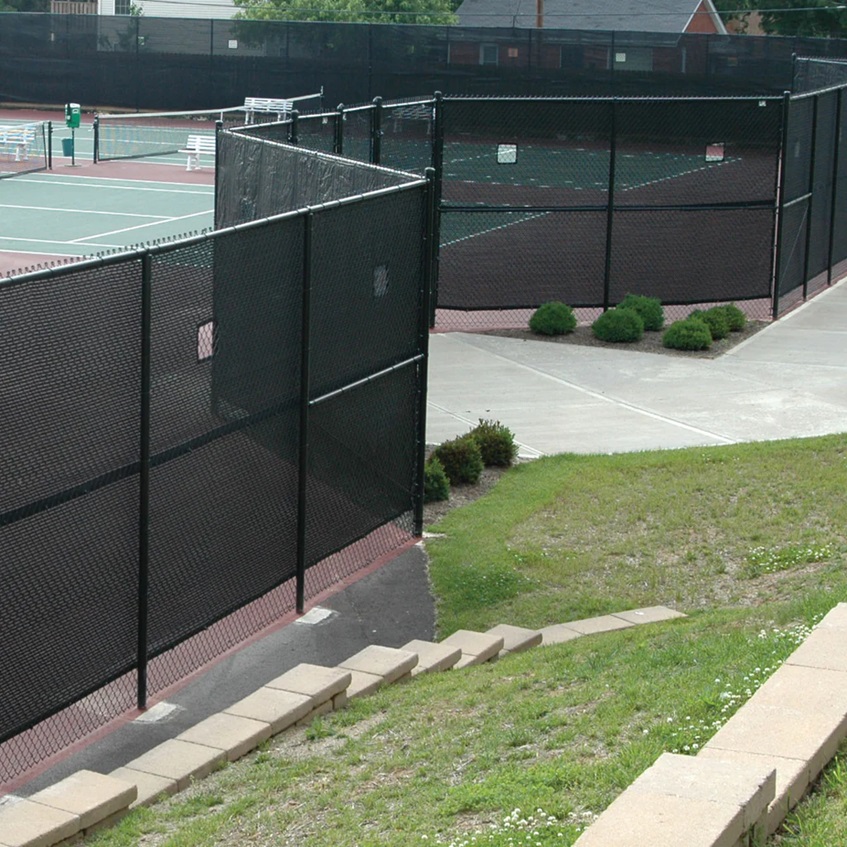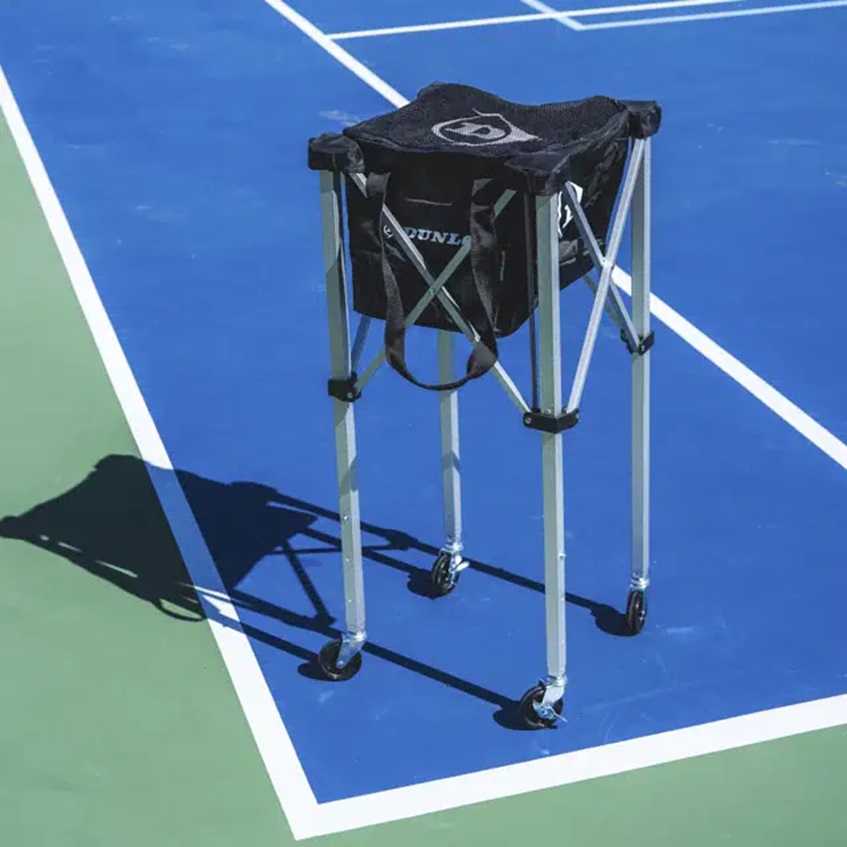Having a well-designed and clean tennis court is a great way to become more successful during the game. Adding some practical accessories will make it even better. But it’ll also make your training session and matches much easier. Here are a few essentials.
Ball Hopper

Any court needs to have a ball hopper. This tool can be of great help when the time comes for the balls to be picked up from around the court. Some people even think it’s a great alternative to a tennis ball machine. All you have to do is grab the balls, place them in the hopper and start practicing your hits.
Hoppers come in various sizes, weighing anywhere from 1.5 kg to 8.5 kg and holding between 40 and 150 balls at a time. It’s a good idea to choose one with adjustable height so you won’t have to bend down every time you need to collect a ball. As for materials, you have two options: plastic and metal. Metal hoppers are more durable but heavier, and of course pricier.
Plastic ones, on the other hand, are lighter, come in a range of colours and are cheaper but can be prone to damage. Another important thing is their portability and mobility. If you’re carrying the hopper to and from the court, portability is key. Many hoppers come with wheels or carry handles to make transporting them easier. A collapsible or foldable design can also be a bonus if you’re limited on storage space. Overall, this is one of the most practical tennis court equipment to acquire.
Tennis Net
A tennis net needs to be incredibly strong as it faces up to 1,200 hours of sunlight each year and endures impacts from balls travelling up to 130 mph. The net headband must handle extreme ball impact, while the net body is under constant tension. For long-lasting durability, the materials and craftsmanship are crucial.
Tennis nets are usually made from polyethylene or polyester. Polyethylene is more hydrophobic, meaning it doesn’t absorb water, making it more stable in wet conditions. Polyester offers better UV resistance, preventing sun damage. The highest-quality nets often use polyester with a PVC coating for added durability.
The net cord can be braided or twisted, with braided cords being the superior option. They absorb more impact, allowing the ball to drop closer to the net. The strength of the net cord also plays a big role in durability. Budget nets use cords as thin as 2.5 mm, while top-tier nets feature cords up to 5 mm thick.
Other components like the net headband, which can be made from polyester or vinyl, and the net cable which should be at least 4 mm thick and coated with vinyl or PVC, are also essential for strength and stability. Quality nets often have a reinforced edge along the sides and bottom.
Finally, workmanship matters. Higher-quality nets feature a double-layer top panel to stand up to constant ball impacts. They also have quad-seam stitching on the headband for more strength and longevity.
Windscreen

When choosing a tennis windscreen, it’s important to pick the right type based on your needs. There are two main options: mesh and solid windscreens. Mesh screens block most dirt, debris and wind, but still allowing some airflow. This is very helpful during hot summer months. On the other hand, solid windscreens offer more protection from rain and wind but can trap heat, making them less ideal for warm weather.
Material choice is also crucial. Most tennis windscreens are made from polypropylene or polyethylene. Polypropylene is a more affordable option, ideal for blocking strong winds. Polyethylene, even though it’s more expensive, is better at reflecting sunlight and moisture, making it a better choice for warmer climates.
It’s further important to measure your court accurately. A 2.5-3 m windscreen is often good enough for optimal coverage. The right windscreen can improve your playing experience by reducing wind speed and keeping debris off the court. It can also add a professional look and increase the value of the court.
Turf Sweeper
Choosing the right turf sweeper is crucial for maintaining a clean surface. When choosing tennis court equipment of this kind, consider factors like sweeping width, adjustable height, and the type of terrain on your court. Wider sweepers cover more area quickly, making them ideal for larger courts. Adjustable height ensures that the sweeper can work on different turf types without damaging the surface. For courts with synthetic or artificial grass, choose a model specifically designed for these materials to avoid wear and tear.
The type of bristles is another important consideration. Soft bristles are effective for removing dust and light debris, and firmer bristles can handle larger particles and more compacted turf. Manual sweepers are budget-friendly and work well for smaller courts, but motorised models are faster and more efficient for larger areas.
When using a turf sweeper, start by clearing any large debris, like leaves or twigs, because they could get in the way. Move the sweeper in a consistent direction, avoiding over-sweeping the same area. Always follow the manufacturer’s instructions to get optimal performance and to extend the life of both your equipment and the court.
Pick-Up Tube
A tennis ball pick-up tube is one of the handiest tennis court supplies for efficiently collecting balls without bending over. It typically has a long, lightweight design with an opening at one end where you can easily drop a ball inside. The tube uses a spring-loaded mechanism to hold the ball in place until you remove it. This tool is especially useful for solo practice or when working with many balls. It’s lightweight and portable, saves time and effort and helps you keep your practice sessions smooth and productive.
Scorekeeper
There are several types of scorekeepers to choose from. Manual net-post scorekeepers are popular for social matches and clubs. They’re made from plastic or metal, with numbers that you manually flip or slide. Digital scoreboards are often used in tournaments and offer advanced features like remote controls or app integration.
For individual tracking, mobile apps allow you to log scores and stats, and some sync with smartwatches. When choosing a scorekeeper, consider its durability, where it will be used and how much of a budget you have for it. For outdoor use, choose weatherproof models with large, clear numbers.


